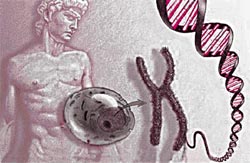Cellular compass
 some us scientists have tried to find out how the cells identify and move in a favourable direction. The dynamics of cellular preferences for a particular direction has puzzled the scientists for a long time. Especially so when such preferences are made on minute cellular scales. Tiang Jin and colleagues working at Johns Hopkins University take us closer to an answer.
some us scientists have tried to find out how the cells identify and move in a favourable direction. The dynamics of cellular preferences for a particular direction has puzzled the scientists for a long time. Especially so when such preferences are made on minute cellular scales. Tiang Jin and colleagues working at Johns Hopkins University take us closer to an answer.
A cell has to be able to sense its surroundings if it is to get by in the world. The cells in our body have more sophisticated problems to solve. They need to know who their neighbours are and be able to sense precisely where they are situated in relation to the rest. This knowledge is essential if the cell is to perform its required functions. The most primitive sensory capability that they possess is the chemical sense, which guides a cell in a particular direction. The phenomenon is called chemotaxis, and it is one of the most fascinating forms of behaviour displayed by single cells.
The fundamental mystery about chemotaxis is how can it tell that moving in one direction is better than moving in any other on such small scales, as much as one-hundredth of a millimetre. The difficulty comes from the fact that sensing molecules on the cell's surface, known as receptors, are located very close to each other and what one receptor senses cannot be much different from another one. This means that the environment must appear pretty much the same in all directions. As an example of the remarkable feats of directional sensing performed by single cells, consider the amoeba Dictyostelium discoideum . This bacterium can sense extraordinarily small differences in the concentration of a molecule known as cyclic amp . At its limit, a D discoideum amoeba can
